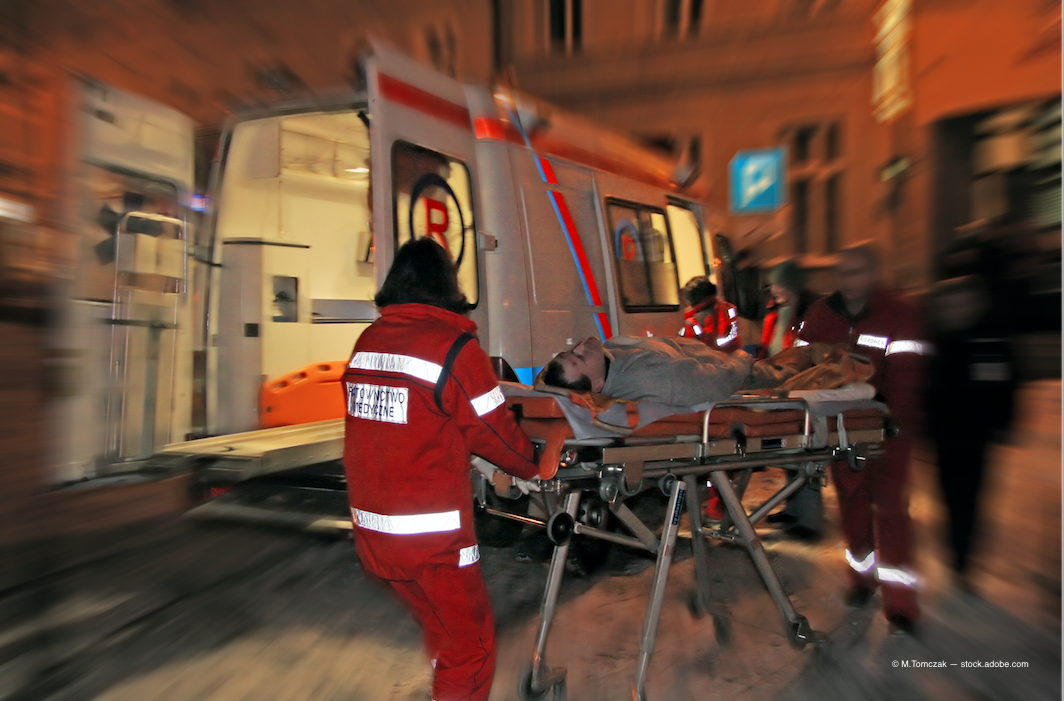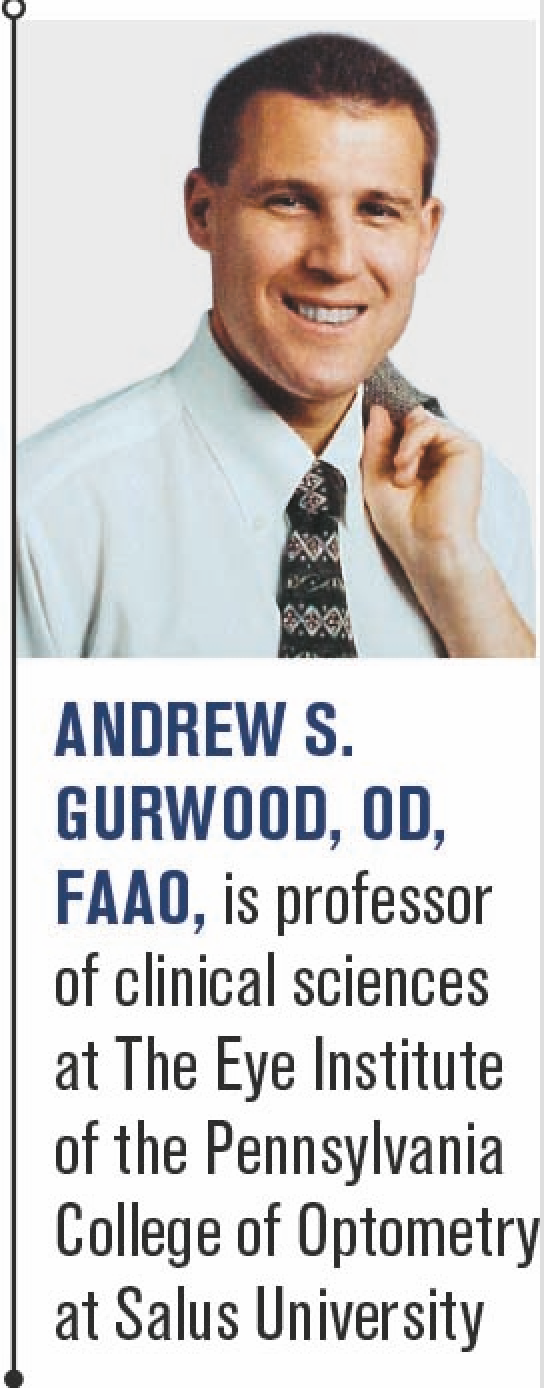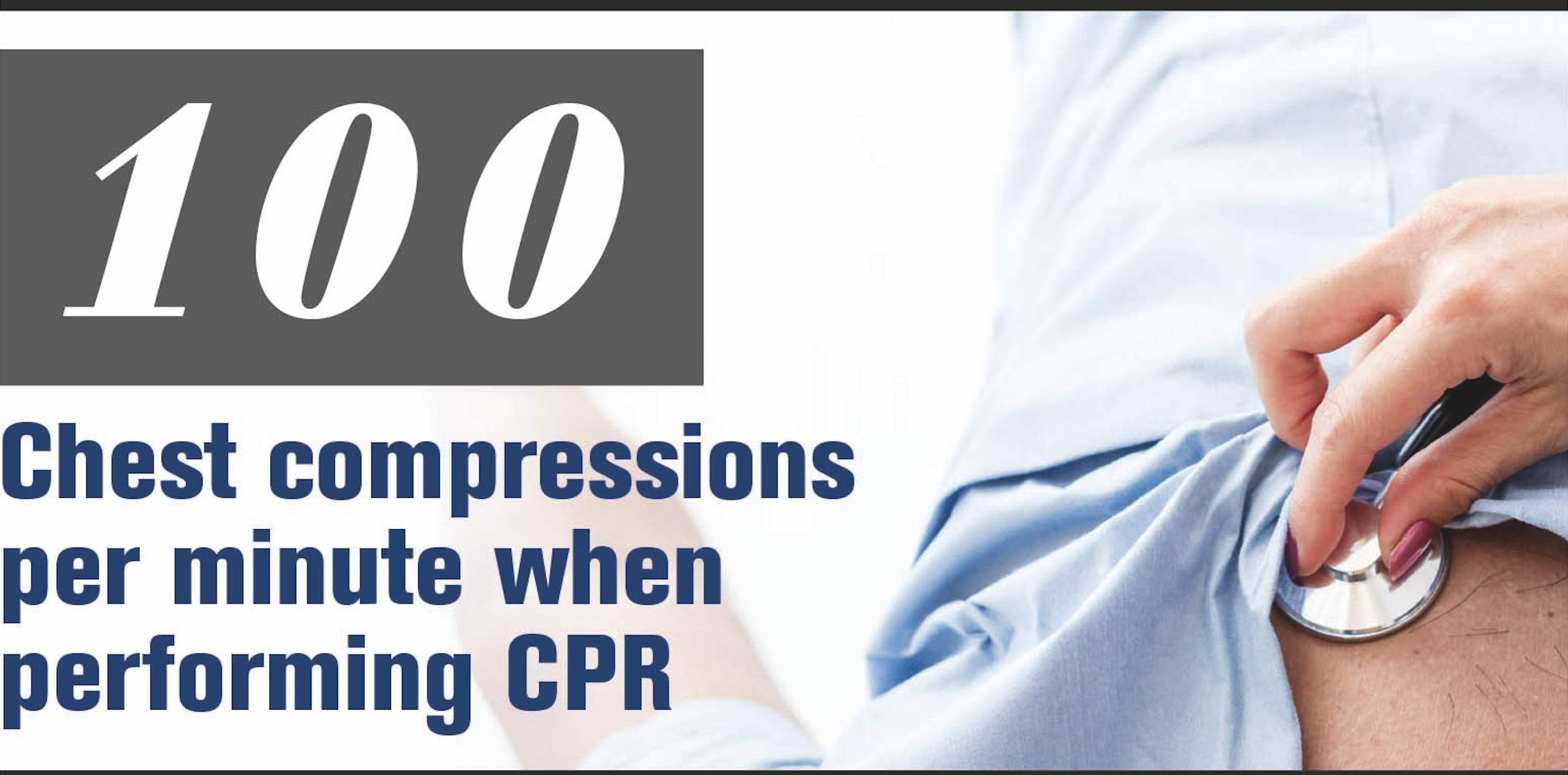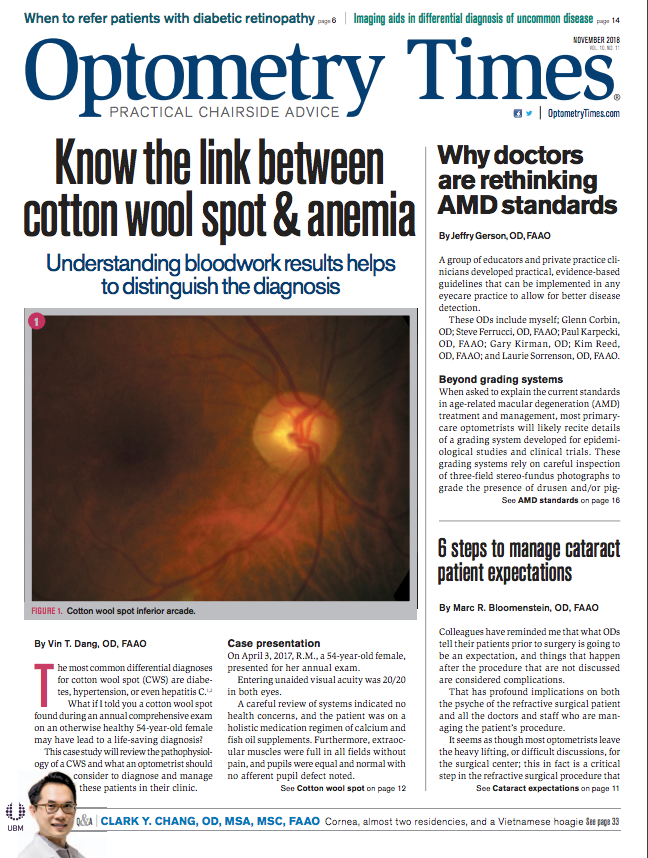How to handle non-ophthalmic emergencies



While it is a foregone conclusion that eyecare practitioners are experts in providing eye care, because of limited experience and insufficient repetition in the skills necessary for the treatment of systemic emergencies, they are often reluctant or unable to dispense what may be potentially life-saving care for non-ophthalmic emergencies both in and out of the office.
When an injury or healthcare emergency is encountered, the doctor, at the very least, should initiate the response of emergency medical services (EMS) by activating the EMS system. This is done by calling 911 (the nationwide EMS number), providing a description of the nature of the emergency, and giving the location of the emergency (never being the first to hang up the phone-today, dispatchers are trained personnel capable of providing life-saving instructions).1
Performing first aid is an obligation only while the doctor is on duty. While out of the office and wearing no identifying markings of a person skilled in dispensing medical services, there is no duty to act. However, with basic training and by using common sense, appropriate and timely interventions can increase the rate of saving function and the rate of saving a life.2,3
First aid history
The modern EMS system takes its roots from the military between 1790 and the mid-1900s when it served to introduce the concept of moving or transporting patients away from the hazards of battle.1
In the '60s, the idea was refined to beginning first aid at the scene and allowing it to proceed, uninterrupted, from the place of occurrence through hospital treatment. In 1966, The National Highway Safety Act charged the United States Department of Transportation (DOT) with developing and organizing EMS standards nationwid, for the purpose of improving “prehospital” care.1
The law
Medical/legal and medical/ethical concerns are included in one’s decision to render care. Rendering care to a minor without a parent or guardian, rendering care to the unconscious, making sure that a terminally ill patient or victim wants your help, making sure that a conscious casualty wants your help, and the delivery of competent emergency care are sources of hidden anxiety and liability.2
The Good Samaritan Law exists in all states and was developed to shield from liability individuals who might try-in good faith, to the best of their ability, and to the standard of care for their level of training-to provide assistance in an emergency.2 The laws do not prevent individuals (victims or relatives) from initiating lawsuits nor do they protect rescuers from being sued.2,3 The laws will not protect caregivers from liability in cases of gross negligence, such as an intentional act or omission which egregiously falls short of standard of care resulting in harm to the patient).2-4
Expressed consent is permission given by adults who are of legal age (this varies from state to state and is usually over age 16) or emancipated minors (those living away from home such as college students or individuals married and on their own) and judged to be mentally competent to make a rational decision regarding their well-being.2,3,5
Such consent must be obtained from all conscious patients who are able to provide it before care begins.
Implied consent applies to unconscious patients. In this circumstance, it is implied that if the patient were rational and conscious, he would permit help.2,3 This allows rescuers the flexibility to treat the unconscious.2
Treating a conscious, mentally competent patient, without her consent is considered assault and battery. Transporting such a patient without consent is considered kidnapping.
The “do not resuscitate” (DNR) order is a written, legal, advanced directive signed by the patient and his doctor. Without the properly notarized document in hand, rescuers and doctors should proceed to start care if they are on duty or if they have decided to intervene.3
Children and mentally incompetent adults cannot legally provide consent or refuse medical care or transport. Consent must be obtained from a parent or legal guardian before care can be initiated. Implied consent covers children in life–threatening situations in which a parent or guardian is not present to provide consent.2
Related: Involve primary-care doctor in retinal artery occlusion
Once care is initiated, it must remain ongoing and can be transferred only to someone of equal or greater healthcare rank. The caregiver/first responder becomes the patient advocate. Leaving the patient and/or scene before securing proper another appropriate caregiver constitutes abandonment.2,6 The rescuer may stop care to save his own life if the scene deteriorates or if he becomes too exhausted to continue the rescue.
Conscious patients have the right to refuse care. When a patient refuses care, four conditions must be fulfilled:2
• The patient must be legal to consent (adult or emancipated minor)
• The patient may refuse whether or not he is mentally oriented
• The patient must be informed of the consequences
• The patient must sign a release of liability, indicating the informed refusal of care
The concept of negligence is recognized as an intentional act or omission resulting in the failure to act properly within the boundaries of one’s level of training.2
Scene safety
Every situation should begin with a scene size-up.1-10 That is, observing the area in which the incident or injury occurred, victim, bystanders, circumstances, and elements involved.
In fact, any time an incident occurs outside of the office, one should be mindful to treat the area as a crime scene: observe who is involved; do not move objects; if you move something to render care, remember where it came from or place it back.
When an incident happens in the office, it’s a foregone conclusion that the practitioner would know what happened by proxy or direct observation. Scene size-up allows responders to become part of the solution instead of part of the problem. Rushing into a environment full of hazards (such as fire, water, chemicals, natural gas, sharps, and more) can result in injury to the helper, creating the need for a second rescue.1,9,10
The dangers of potential exposures to both airborne and bloodborne pathogens (Hepatitis B and C, tuberculosis, human immunodeficiency virus [HIV], chicken pox [varicella], measles [rubella], bactrial and viral meningitis) mandate specific precautions before initiating patient contact.1,7-10
The methods and equipment used for protection against bloodborne and airborne pathogens were previously termed “universal precautions.” Today, it has been redefined as “body substance isolation precaution” (BSI).1,7-10 Everyone in every situation, everytime should be handled the same.1,9,10
A lab coat, scrubs, protective mask, protective eyewear ,and gloves make up personal protective equipment (PPE).7-10
Required instruments
The basic trauma/urgencies first response kit has some requirements. Each compartment should be easy to access and well labeled.
The first compartment in the kit should contain BSI (several pairs of gloves, masks, goggles) along with critical emergency phone numbers and instruction cards.
Another compartment should house the instruments which measure vital signs (blood pressure, pupils, lung sounds, respiration, pulse, skin) such as a stethoscope, sphygmomanometer, and penlight. It should also contain data recording devices (several pens and forms). A stopwatch and a thermometer might be helpful but are optional.
The main compartment of the bag should store airway management devices such as a pocket mask or bag valve mask, bite sticks, and airways (if the attending knows how to use them). Oxygen masks (nonrebreather mask, nasal canula) should be available only as licensure permits. An automatic external defibrillator (AED) is also a nice option.
Finally, the kit should include various wound and bleeding control implements along with antiseptics (Band-Aids, 4x4 bandages, gauze bandages, Ace bandages, tape, scissors, tweezers).
Wool blankets or towels are versatile tools in the first-aid armamentarium. They can be used to warm the patient and prevent shock, elevate the legs and or head for comfort, or to cover the patient to prevent exposure from debris. When rolled, blankets or towels can be used creatively as flexible/moldable splints, cravats (slings), and temporary cervical immobilization collars.
While cervical immobilization devices (CID collars) are an essential element of managing victims of trauma, they are not an absolute requirement because most people do not know how to use or size them properly. An improperly fitted CID can disturb the injury, affect breathing, and lead to unnecessary movement by the patient or treatment team. Because EMS will be summoned, manually holding the head and cervical spine steady is satisfactory; however once head holding begins, it must be maintained until someone with proper credentials clears the spine.
Basic life support sequence
The CABH approach to emergency care stands for: Circulation, Airway, Breathing, and Hemorrhage.11-16
Recent changes to the cardiopulmonary resuscitation (CPR) sequence recognize that most non-professional rescuers do not know how to properly assess for a pulse. The new algorithm calls for rescuers who find unconscious individuals when they did not witness what happened or how the person lost consciousness to immediately begin compressions at a rate of 100 compressions per minute. The balance of the CPR protocol can be followed (layperson [non-breathing] or healthcare professional with automatic external defibrillator [AED] use).
I add hemorrhage to this protocol as a reminder that circulating the blood via compressions without stopping life-threatening bleeding is counterproductive and fatal.11-18 While CPR increases the probability of recovery for the lifeless, rapid external defibrillation via the deployment of an AED provides the best chance for patient survival.11,12,20-22
First response
Acute care is not difficult when the patient is conscious, alert, and aware. Data gathering begins by assessing the scene and taking a history. Next, clinical information and vital signs (blood pressure, pulse, respirations, skin, pupils) can be recorded in the detailed medical assessment. Finally, analyzing the data permits forming a working diagnosis and choosing appropriate interventions.
Remember, first response is about stabilization: keeping the patient comfortable, breathing, and viable until professional healthcare responders arrive at the scene.
In the conscious patient scenario, because the patient is capable of speaking and explaining what happened, the responder can observe if the individual has reasonable mental status, is breathing, and has intact circulation.
In these cases, the rescuer needs to call EMS and provide stabilizing interventions until EMS arrives, reassessing the patient every five minutes to insure that the interventions are still working.11-16
Things become more complicated when with an unconscious victim.23
For the first responder, all unconscious cases, whether determined to involve medical circumstances (diabetes, seizure, fainting, myocardial infarction) without a significant mechanism of injury (head trauma, high speed injury, fall from two times the person’s height) or involving significant mechanism of injury should be handled with the same approach:
• Assess and size up the scene, making sure it is safe to intervene
• Begin a rapid medical/trauma assessment by observing the entire body working from the head down. Included in the rapid assessment are:
-Examination of the head (bleeding from the nose, ears, obstruction of the airway)
-Neck (bleeding, deformities, normal jugular vein distention)
-Chest (paradoxical motion, broken ribs)
-Abdomen (rigid/distended belly)
-Pelvis
-Extremities
-Back; the casualty should not be rolled unless the first responder is skilled in the proper technique. Unskilled rescuers can slip a gloved hand under the casualty to determine if there is bleeding or other concerns
A child should be examined from the feet up because children may become frightened with a stranger so close to their faces.
Once the patient is determined to be breathing and stable, a more detailed evaluation can begin. A detailed assessment includes looking for deformities, contusions, abrasions/punctures, burns, bleeding, tenderness, lacerations and swelling (D-CAB BTLS).24
Reassessing the mechanism of injury, breathing, vital signs, and interventions are a staple of EMS care. In critical injury patients (trauma/significant mechanism of injury/life threatening medical cases), reassessment should be done every three minutes; in non-life threatening scenarios, every five minutes.
These reassessments should be recorded. Each reassessment should include measurement of vital signs, reassessment of mental status, reassessment of circulatory perfusion (capillary refill), and evaluating whether the current interventions are working.
When EMS arrives, a report should be given which includes:
• Demographics of the patient
• Description of the events that lead up to the injury or illness
• “SAMPLE” history (Signs and symptoms, Allergies, Medications, Previous health history, Last meal details, Events that led up to the emergency)
• Vital signs
• Interventions
All paperwork (records or notes kept on the case) should be handed directly to the EMS crew and the transfer of care should be confirmed by the EMS personnel and noted with the time of transer. Care cannot be transfered to anyone who is not of equal or greater rank than the first responder. An EMT, in the arena of emergency health care, outranks an optometrist.
Shock and bleeding
It is imperative one recognize the signs and symptoms of shock or hypoperfusion.25 Shock is the failure of the circulatory system to provide adequate oxygenation to the body. It may result from loss of blood (hypovolemic shock), a failing heart (cardiogenic shock), or neurologic messages dilating the blood vessels causing the blood pressure to drop (neurogenic shock).25-28
Shock is categorized three ways:25-28
• Compensated shock: the body can correct for some of the deficiencies of the hypoperfusion
• Decompensated shock: compensation no longer possible, crash immanent
• Irreversible shock: irreparable damage to organs.
The best way to manage shock is to prevent it. Keep the patient well oxygenated, warm, and lying in the recovery position, if possible. If the patient is having trouble breathing, a sitting position may be preferred (Fowler’s position). If circulation is a concern, as in the case of syncope, an elevated leg position (Trendelenberg position) may be required.25-28
Never move patients with potential spinal injuries in a stable scene.
The “golden hour” is defined as the 60-minute time period from point of the injury discovery injury until care is transferred to the hospital staff. Getting the casualty stable and to the hospital within this interval offers the best chance for recovery.25
Arterial bleeding is characterized by its bright red color (oxygenated blood) and its pulsating flow which coincides with the heartbeat. Capillary bleeding is slow and oozing. Venous bleeding is recognized by a steady flow and maroon or bluish color (deoxygenated blood).
A gloved hand can pass around the head, under the neck, and over all surfaces of the body. The examiner can inspect the gloves to identify an area where bleeding control is necessary. The loss of one liter of blood is considered serious in an adult (6 quarts total=4,200 liters). The loss of 500 cc (2 pints) is considered serious in a child (3 quarts total=3,000 liters). In an infant (total volume of 800 cc), losing a mere 150 cc is critical.25,26
Bleeding control should be accomplished in stages:25
1. The first step is the application of a direct pressure dressing in the position where the injury was found. While elevation used to be a staple, it is no longer performed because it was found to cause unintended consequences. If blood soaks through the initial dressing, apply additional dressings on top of the first dressing. Once applied, a pressure dressing should not be removed in the field.
2. If Step One is not adequate, the next step is compression of the major vessel of supply. This activity is discourages for untrained persons. In the arms, the brachial arteries can be compressed against the humorous. In the legs, the femoral arteries can be compressed against the femur or in the region of the pelvis.
3. When Steps One and Two fail, apply a tourniquet. Tourniquets are a last resort and should be considered only when the situation has become life threatening. Once applied, they should not be removed in the field.
Internal bleeding may be marked by rigidity of the abdomen, lapsed consciousness, cool clammy skin, nausea, low blood pressure, thirst and or altered mental status.
Stay current
An OD with a basic understanding of first aid and the steps to initiate can become an effective EMS team member in an non-ophthalmic emergency care in or out of her office when professional responders are not present.
Doctors interested in additional training for themselves-or their staffs-can take in-person or online first aid classes through the American Red Cross and similar organizations.
References:
1. Limmer D, O’Keefe MF, Grant HD, Murray RH Jr, Bergeron JD. Introduction to Emergency Medical Care. In: Limmer D, O’Keefe MF, Grant HD, Murray RH Jr, Bergeron JD, et al. Emergency Care. 9th ed. Upper Saddle River, NJ, Prentice Hall. 2001:3-13.
2. Limmer D, O’Keefe MF, Grant HD, Murray RH Jr, Bergeron JD. Medical/Legal and Ethical Issues. Limmer D, O’Keefe MF, Grant HD, Murray RH Jr, Bergeron JD. In: Limmer D, O’Keefe MF, Grant HD, Murray RH Jr, Bergeron JD, et al. Emergency Care. 9th ed. Upper Saddle River, NJ, Prentice Hall. 2001:33-45.
3. Aumiller A. The Good Samaritan Law. Personal communication. 2003.
4. Muchnick B.G. When Medical Crisis Visits Your Office. Rev Optometry. 1997;34(11):50–58.
5. Holder AR. Minors Rights to Consent to Medical Care. JAMA. 1987; 257 ( 24 ) : 3400 – 3402.
6. Larkin GL, Fowler RL. Essential ethics for EMS: cardinal virtues and core principles. Emerg Med Clin North Am. 2002 Nov;20(4):887-911.
7. Brooks S, Khan A, Stoica D, Griffith J, Friedeman L, Mukherji R, Hameed R, Schupf N. Reduction in vancomycin-resistant Enterococcus and Clostridium difficile infections following change to tympanic thermometers. Infect Control Hosp Epidemiol. 1998 May;19(5):333-6.
8. Nolte KB, Taylor DG, Richmond JY. Biosafety considerations for autopsy. Am J Forensic Med Pathol. 2002 Jun;23(2):107-22.
9. Rinnert KJ, Hall WL. 2nd Tactical emergency medical support. Emerg Med Clin North Am. 2002 Nov;20(4):929-52.
10. Limmer D, O’Keefe MF, Grant HD, Murray RH Jr, Bergeron JD. Introduction to Emergency Medical Care. In: Limmer D, O’Keefe MF, Grant HD, Murray RH Jr, Bergeron JD, et al. Emergency Care. 9th ed. Upper Saddle River, NJ, Prentice Hall. 2001:13–31.
11. Stapleton ER, Aufderheide TP, Hazinski MF, Cummins RO. Basic life support in perspective. In: Stapleton ER, Aufderheide TP, Hazinski MF, Cummins RO. Eds. BLS for Healthcare Providers. Dallas, TX; The American Heart Association. 2001:1-13.
12. Sayre MR, Swor R, Pepe PE, Overton J. Current issues in cardiopulmonary resuscitation. Prehosp Emerg Care. 2003. 2003 Jan-Mar;7(1):24-30.
13. Laws T. There is more to CPR than ABC. Contemp Nurse. 1993 Aug;2(2):85-6.
14. Soud T. Airway, breathing, circulation, and disability: what is different about kids? J Emerg Nurs. 1992 Apr;18(2):107-16.
15. Gabrielli A, Layon AJ, Wenzel V, Dorges V, Idris AH. Alternative ventilation strategies in cardiopulmonary resuscitation. Curr Opin Crit Care. 2002 Jun;8(3):199-211.
16. Stapleton ER. Basic life support cardiopulmonary resuscitation. Cardiol Clin. 2002 Feb;20(1):1-12.
17. Greingor JL. Quality of cardiac massage with ratio compression-ventilation 5/1 and 15/2.
Resuscitation. 2002 Dec;55(3):263-7.
18. Babbs CF, Kern KB. Optimum compression to ventilation ratios in CPR under realistic, practical conditions: a physiological and mathematical analysis. Resuscitation. 2002 Aug;54(2):147-57.
19. Kern KB, Hilwig RW, Berg RA, Sanders AB, Ewy GA. Importance of continuous chest compressions during cardiopulmonary resuscitation: improved outcome during a simulated single lay-rescuer scenario. Circulation. 2002 Feb 5;105(5):645-9.
20. Caffrey S. Feasibility of public access to defibrillation. Curr Opin Crit Care. 2002 Jun;8(3):195-8.
21. Lim GH, Seow E. Resuscitation for patients with out-of-hospital cardiac arrest: Singapore.
Prehosp Disaster Med. 2002 Apr-Jun;17(2):96-101.
22. Stapleton ER, Aufderheide TP, Hazinski MF, Cummins RO. Automated external defibrillation. In: Stapleton ER, Aufderheide TP, Hazinski MF, Cummins RO. Eds. BLS for Healthcare Providers. Dallas, TX, The American Heart Association. 2001:91-121.
23. Limmer D, O’Keefe MF, Grant HD, Murray RH Jr, Bergeron JD. Mechanisms of injury and effected areas of the body. In: Limmer D, O’Keefe MF, Grant HD, Murray RH Jr, Bergeron JD, et al. Emergency Care. 9th ed. Upper Saddle River, NJ, Prentice Hall. 2001:152-161.
24. Limmer D, O’Keefe MF, Grant HD, Murray RH Jr, Bergeron JD. Assessment of the trauma patient. In: Limmer D, O’Keefe MF, Grant HD, Murray RH Jr, Bergeron JD, et al. Emergency Care. 9th ed. Upper Saddle River, NJ, Prentice Hall. 2001:196-231.
25. Limmer D, O’Keefe MF, Grant HD, Murray RH Jr, Bergeron JD. Bleeding and shock In: Limmer D, O’Keefe MF, Grant HD, Murray RH Jr, Bergeron JD, et al. Emergency Care. 9th ed. Upper Saddle River, NJ, Prentice Hall. 2001:500-523.
26. Bailey R. Biology Prefixes and Suffixes: hem- or hemo- or hemato-. ThoughtCo. Available at: http://biology.about.com/library/bldyknow091499.htm. Accessed 10/30/18.
27. Fowler R, Pepe PE. Prehospital care of the patient with major trauma. Emerg Med Clin North Am. 2002 Nov;20(4):953-74.
28. Nolan JP, De Latorre FJ, Steen PA, Chamberlain DA, Bossaert LL. Advanced life support drugs: do they really work? Curr Opin Crit Care. 2002 Jun;8(3):212-8.
29. Daroff RB, Martin JB. Faintness, syncope, dizziness and vertigo. In: Fauci A, Braunwald E, Isselbacher KJ, Wilson JD, Martin JB, Kasper DL, Hauser SL, Longo DL, eds. Harrison’s Principles of Internal Medicine, 14th ed. New York, McGraw-Hill. 1998:100-107.
